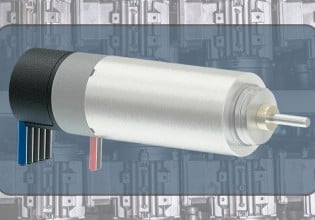Eaton Vehicle Group Utilizing Industry 4.0 Technology to Help Remote Workers During Pandemic
To help engineers operate remotely, Eaton Vehicle Group, a subsidiary of Eaton Corp, is deploying Industry 4.0 technologies including 3D holo systems, AR, and robotics.
Eaton Vehicle Group recently announced changes that will enable them to operate through the COVID-19 pandemic. Eaton is known in the industry for producing multiple power solutions for a variety of sectors including electrical, industrial, and the automotive sector. Since the early days of the company, Eaton has continually created a larger presence in the automotive industry, and is now a world leader in automotive and electrical solutions.
Industry 4.0 Technologies
The COVID-19 pandemic has had a massive impact on global markets in the last several months. One of the biggest factors has been the increasing amount of people working remotely. During this time, it is essential that workers can operate remotely. For most areas of work, this can be more easily achieved with a reliable internet connection and a few project management tools.

An Eaton technician performing setup and machining of a 15-5 stainless steel part. Image courtesy of Eaton.
However, the same cannot be said for designers and engineers who need access to specialized software tools, prototyping systems, and in-person collaboration. To help designers operate remotely, Eaton Vehicle Group, a subsidiary of Eaton Corporation, is deploying Industry 4.0 technologies including 3D holo systems, AR, and robotics. The technologies that Eaton Vehicle Group is deploying allow engineers to perform remote work which helps to prevent the spread of the virus by following social distancing rules.
Microsoft HoloLens 2
Microsoft HoloLens 2 is an interactive AR system that allows users to visualize their surroundings. Eaton is utilizing this technology to allow people to perform remote assistance tasks in their facilities as well as help out on critical activities.
The use of these systems also provides future expansion for engineers who are looking to work on physical models but cannot be sent samples of a workpiece if they are too large or expensive to ship.
This also means that groups of engineers can work on the same 3D model simultaneously, and allow for potential design flaws to be spotted early in the process. The AR technology is also being used to train new employees on operating equipment that they currently cannot get access to. This allows the company to continue its training programs as well as get employees operating equipment from day one, even after lockdown rules are lifted.
Automated Vehicles
Automated vehicles provide Eaton manufacturing sites safe methods for transporting goods from one process facility to the next. One of the biggest dangers of COVID-19 is the transmission of the virus from one worker to another. The use of autonomous vehicles helps to reduce this spread.
This equipment also helps to reduce the cost to the manufacturing site in a number of ways. The use of automated vehicles reduces wage costs as fewer employees are needed. The second cost-reducing factor of using automated vehicles comes from the ability for that facility to continue to operate during the lockdown.
3D Printing Tools
3D printing technologies provide engineering companies the ability to prototype new parts in-house while being a fraction of the cost of a custom-made prototype from a third party. Such printing technologies also allow engineers to model designs from a home environment, have the design digitally sent to the manufacturing site, and have the design printed immediately.

3D-printed latticed aluminum aerospace parts, produced with Laser Powder Bed Fusion. Image courtesy of Eaton.
The result is that remote engineers can get their designs tested quickly while ensuring social distancing between workers. The cost of 3D printers is also giving designers the ability to create models at home, which allows them to make changes to designs without having to wait several days for a model to be manufactured and shipped back.
Simulations and Mass Data Gathering
The use of mass data gathering is now opening up the possibility of production simulation to manufacturers. Simulations can allow engineers to decide on the best manufacturing methods without needing to be physically present at a facility.
The use of IoT devices also allows engineers to view live data remotely, and make immediate changes should errors be detected. This, coupled with AI, can then help facilities make gradual improvements over time as AI algorithms develop predictive capabilities and detect potential issues before they become problematic.
Eaton is just one of many industry leaders aiming to reduce the spread of COVID-19 and create a seamless integration of workflow for engineers working remotely.






